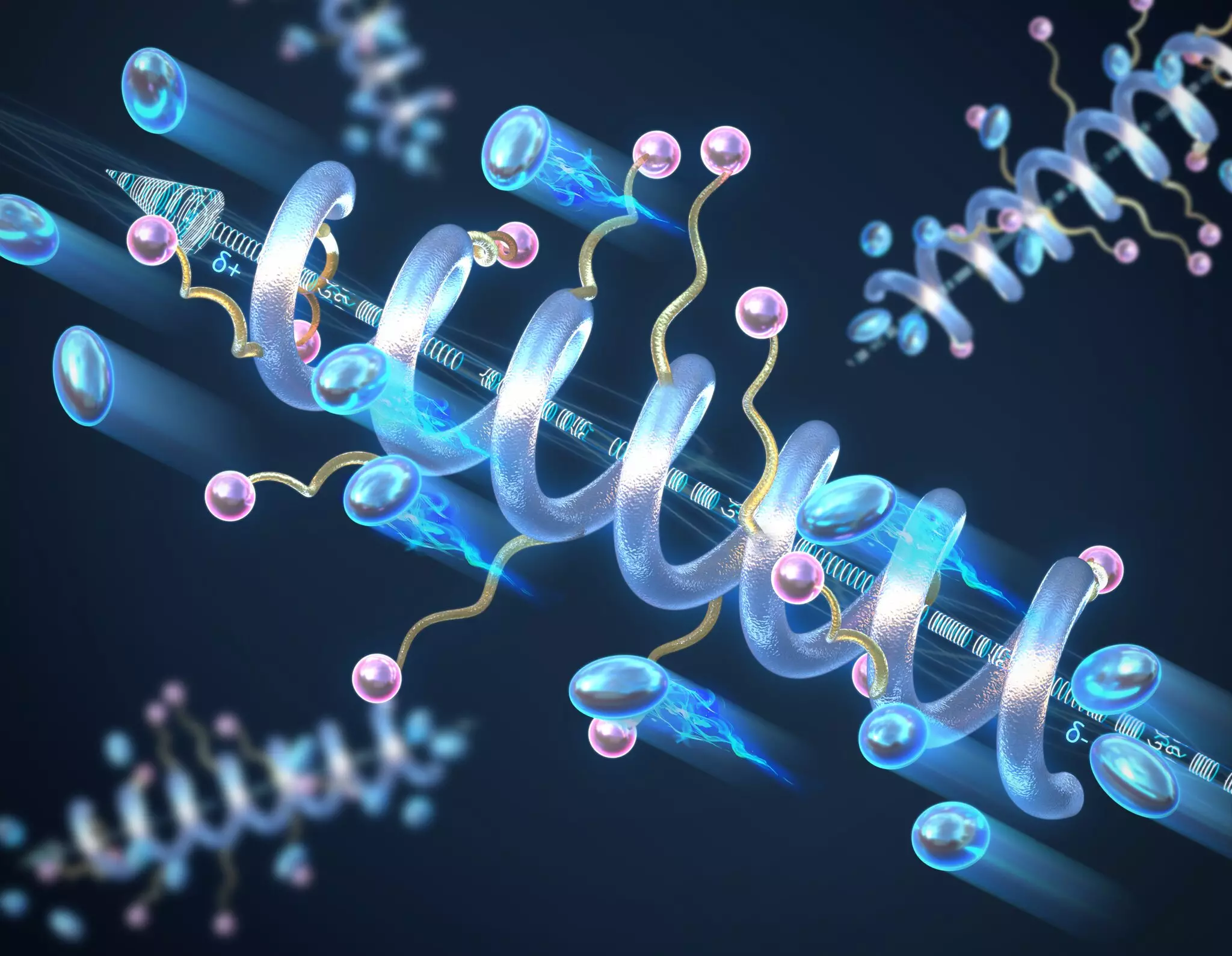The quest for improved energy storage solutions has led researchers to explore various solid-state electrolytes as alternatives to conventional liquid electrolytes used in batteries. Solid-state electrolytes provide a promising avenue due to their enhanced safety characteristics, eliminating issues such as leakage and flammability associated with liquid counterparts. However, to fully realize the potential of solid-state batteries, especially those that utilize polymer electrolytes, the scientific community must identify innovative strategies to enhance their conductivity and stability.
Recent groundbreaking research undertaken by materials scientists at the University of Illinois Urbana-Champaign has shed light on the role of helical secondary structures in augmenting the properties of solid-state peptide polymer electrolytes. In their study titled “Helical peptide structure improves conductivity and stability of solid electrolytes,” published in the esteemed journal Nature Materials, the researchers discovered that helical formations significantly outperform their “random coil” counterparts in terms of ionic conductivity. By focusing on the geometry and arrangement of the polymer backbone, the team successfully manipulated the structural configuration, leading to more efficient charge transport mechanisms.
The concept of utilizing a helical structure—akin to the familiar double helix found in DNA—represents a fascinating intersection of materials science and biology. The unique macrodipole moment generated by the helical arrangement is a critical factor in elevating the performance of these electrolytes. In simpler terms, as the helix extends, it facilitates a greater separation of charges, thereby amplifying both the conductivity and dielectric constant of the material. By ensuring that the individual peptides within the polymer align into a helix rather than adopting random configurations, researchers are effectively optimizing the pathways through which ions can traverse.
Moreover, the findings revealed a direct correlation between the length of the helical structure and its conductivity; longer helices exhibited superior conductivity. This systematic exploration showcases the intricate relationship between structural design and electrochemical performance, suggesting new avenues for engineering polymers that are not only more efficient but also more resilient than traditional options.
One of the hallmark advantages of these helical peptide polymer electrolytes is their durability. As noted by Professor Chris Evans, who spearheaded the research, these polymers demonstrate remarkable stability against thermal and electrical stress. Unlike conventional polymers that may degrade under high temperatures or voltages, the helical structures maintain their integrity, ensuring reliable performance even in demanding conditions. This enhanced stability could pave the way for batteries with longer lifespans and more consistent performance metrics.
Additionally, the environmental benefits associated with the use of peptide-based polymers cannot be overstated. Upon reaching the end of their operational life, these materials can be biodegraded back into their monomer units through the action of enzymes or acids. This property not only provides a sustainable disposal method but also allows for the potential recovery and reuse of starting materials, aligning with global goals for reducing waste and fostering circular economies in battery technology.
The implications of this research are far-reaching, particularly for the development of next-generation solid-state batteries. As demand for high-performance batteries continues to rise—driven by the needs of electric vehicles, portable electronics, and renewable energy storage—these helical peptide polymer electrolytes represent a critical step forward. By addressing both the efficiency and sustainability challenges faced by existing energy storage solutions, this work opens new doors for innovation within the energy sector.
Furthermore, the ability to design polymers with tailored properties based on structural geometry heralds a new approach to materials engineering. Researchers can potentially explore other secondary structures to optimize various aspects of polymer performance, enhancing the overall versatility of solid-state electrolytes across diverse applications.
The investigation into helical peptide polymer electrolytes demonstrates a significant evolution in the field of energy storage materials. By marrying biological principles with advanced engineering techniques, researchers are not only enhancing ionic conductivity and stability but also taking vital strides towards creating more sustainable battery technologies. As this research continues to inspire further innovations, the energy sector is poised to undergo transformative changes that prioritize performance alongside environmental responsibility.

